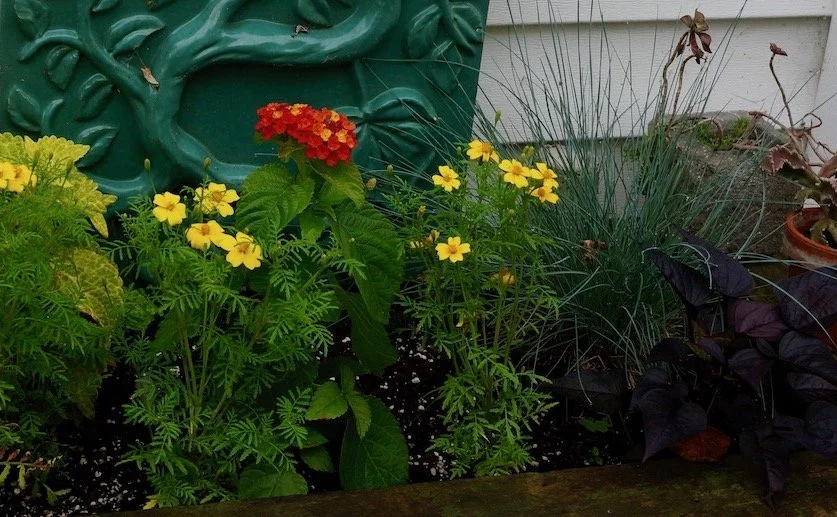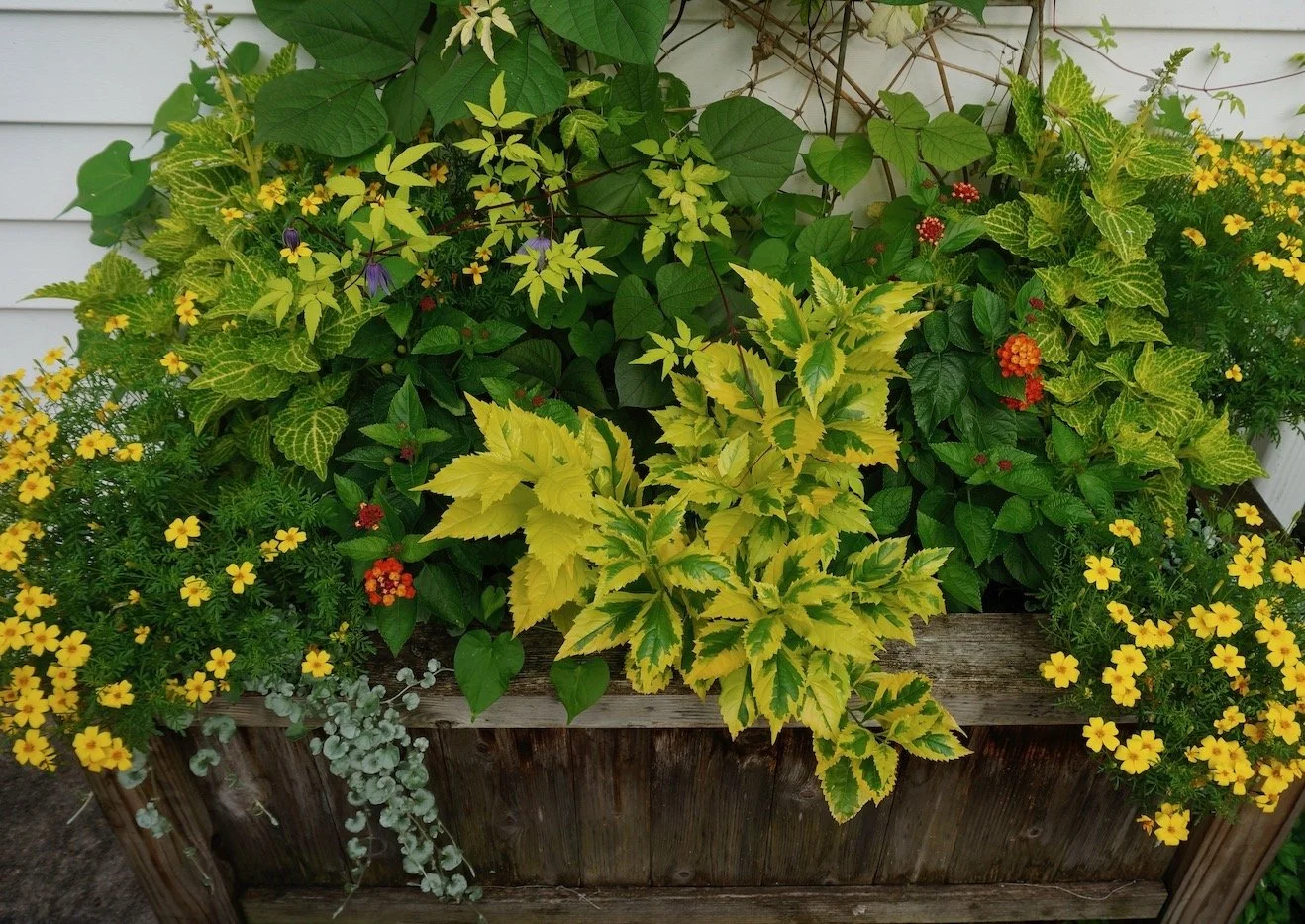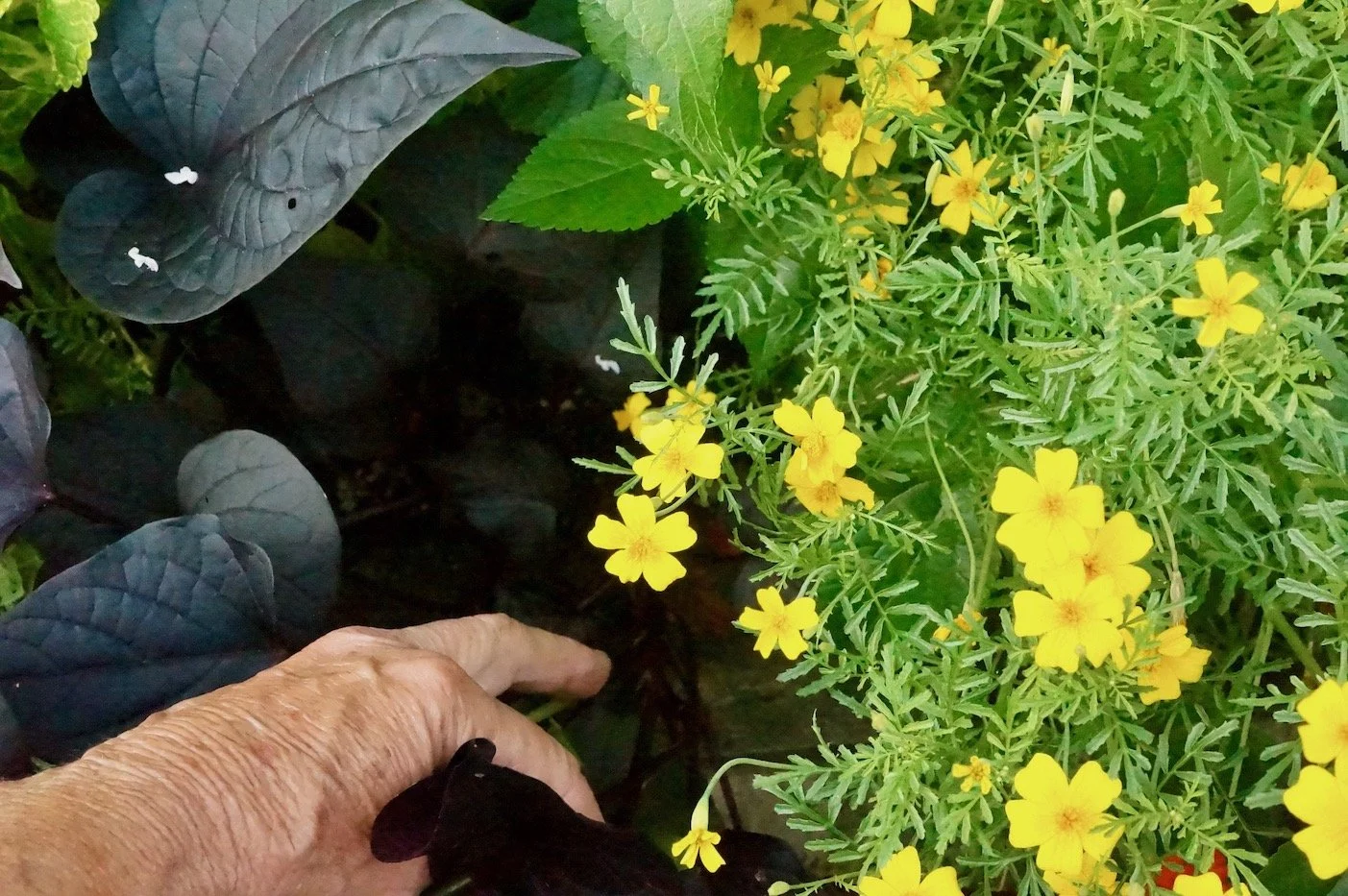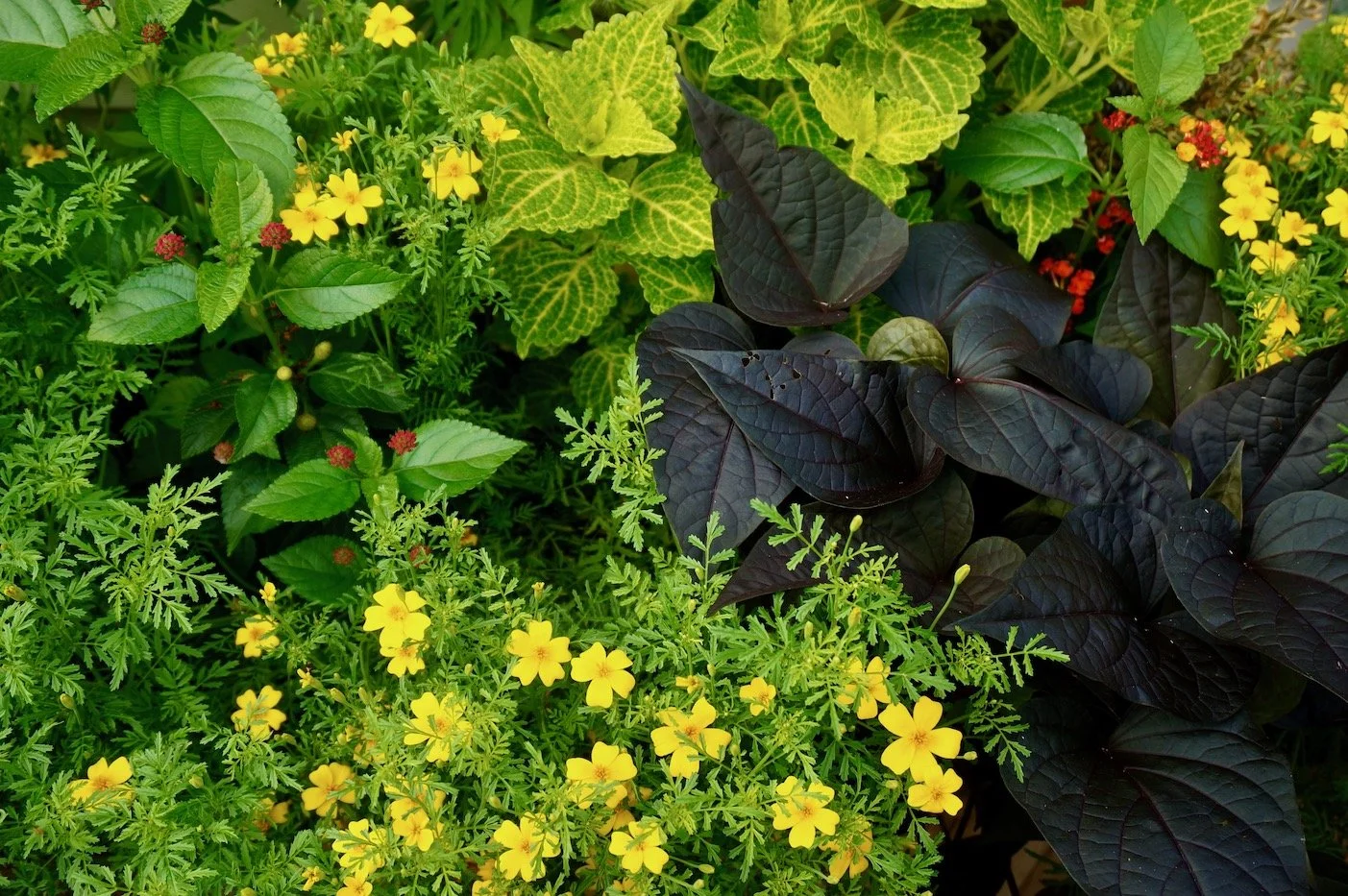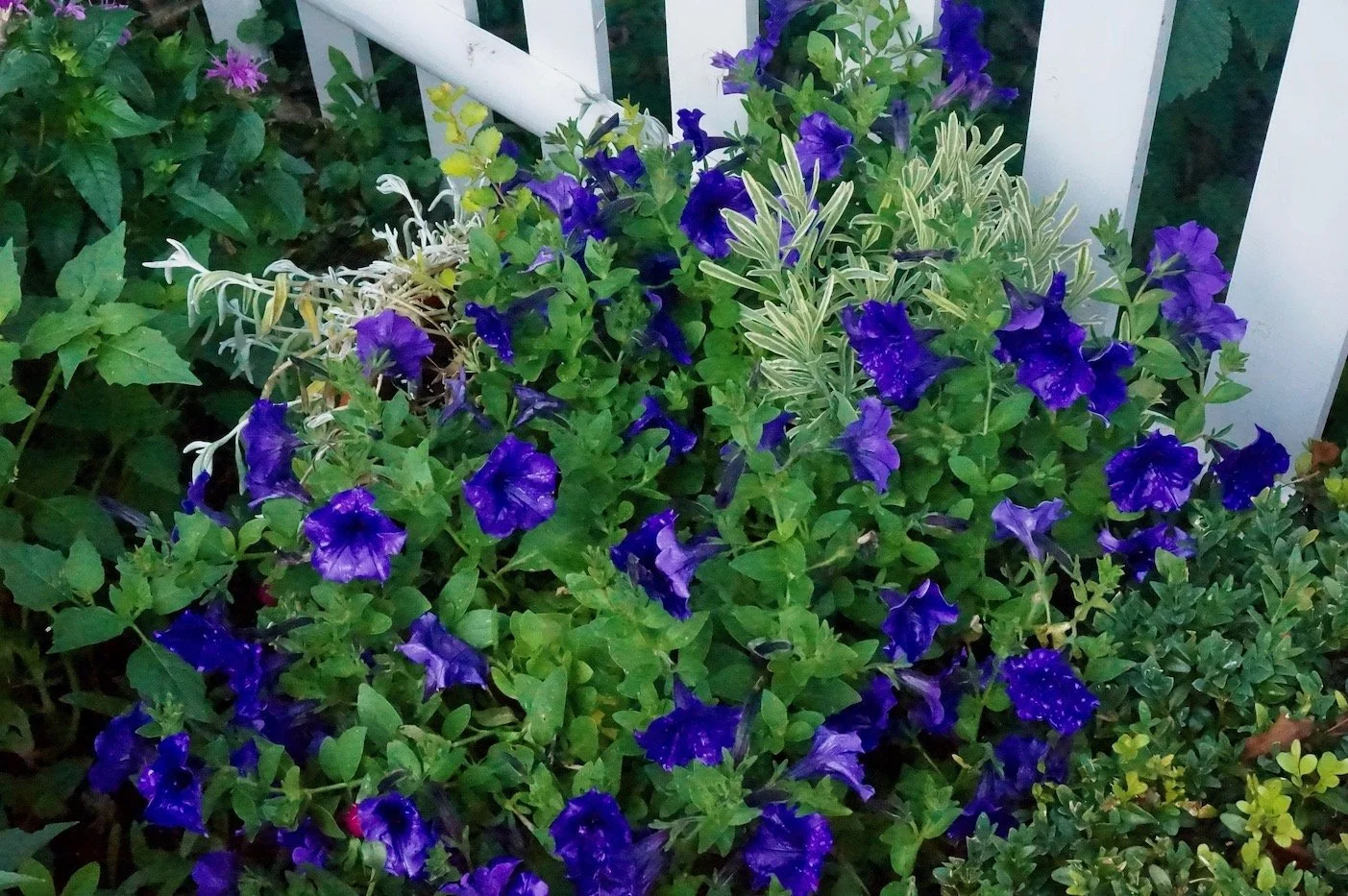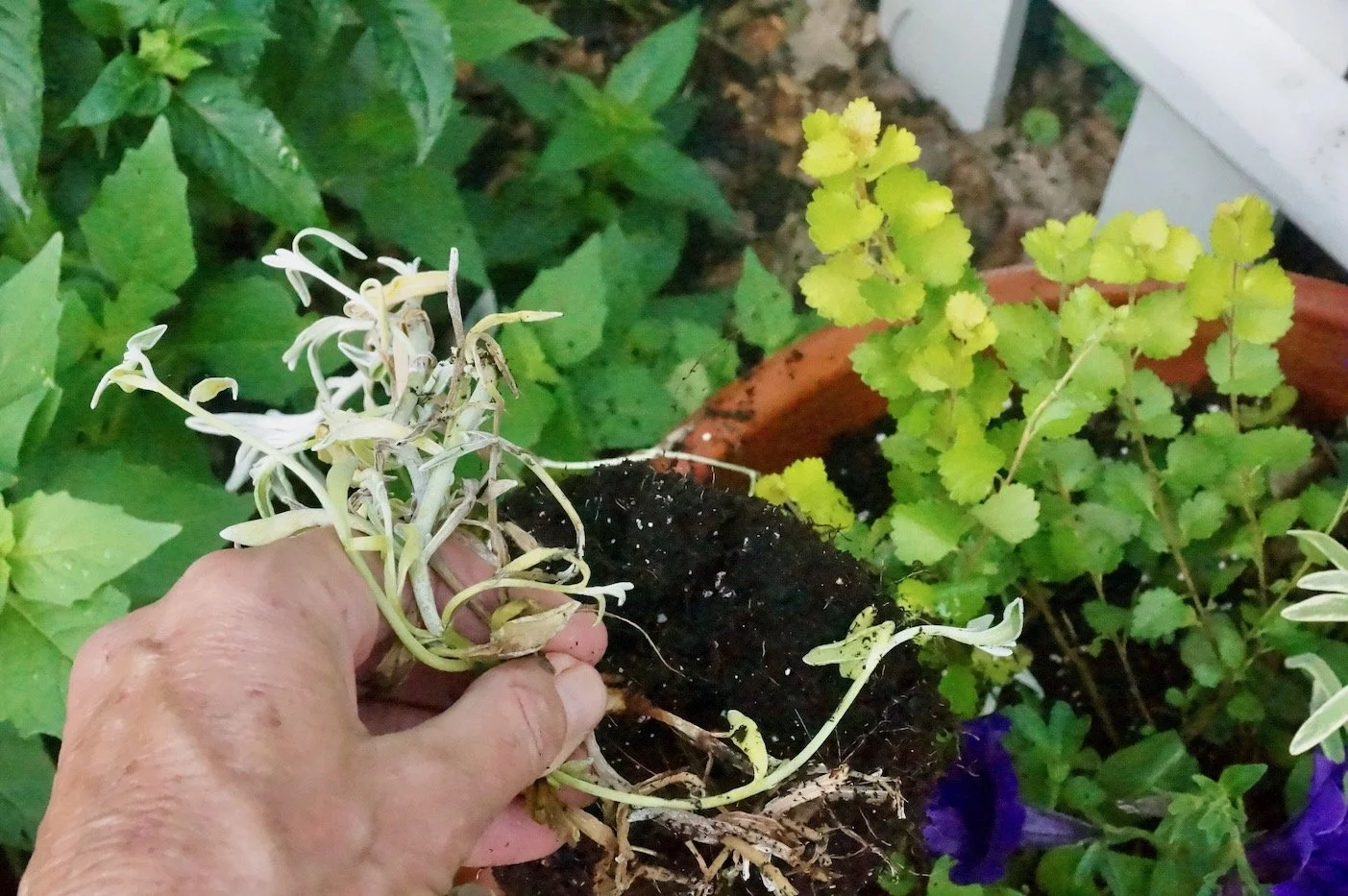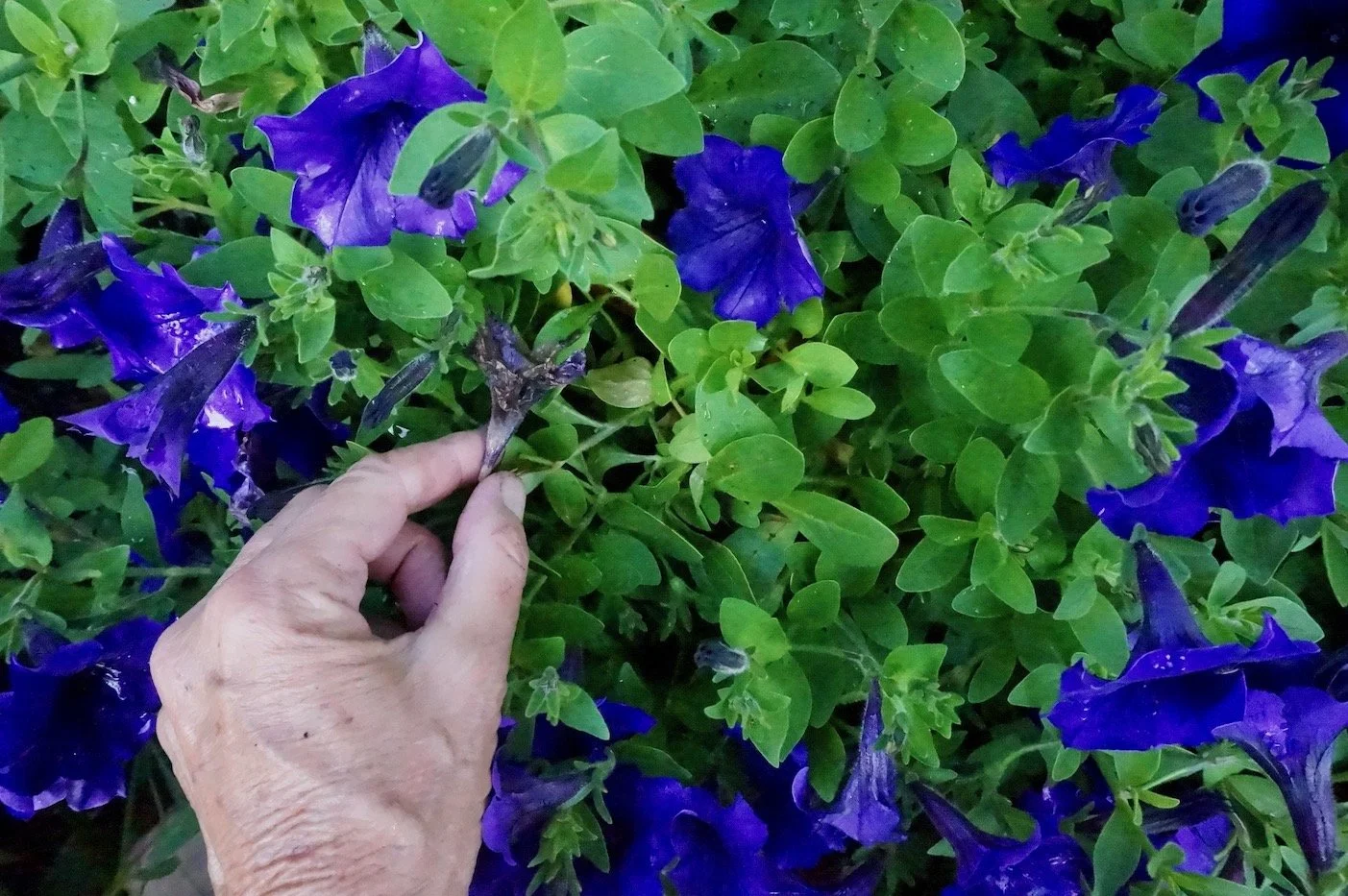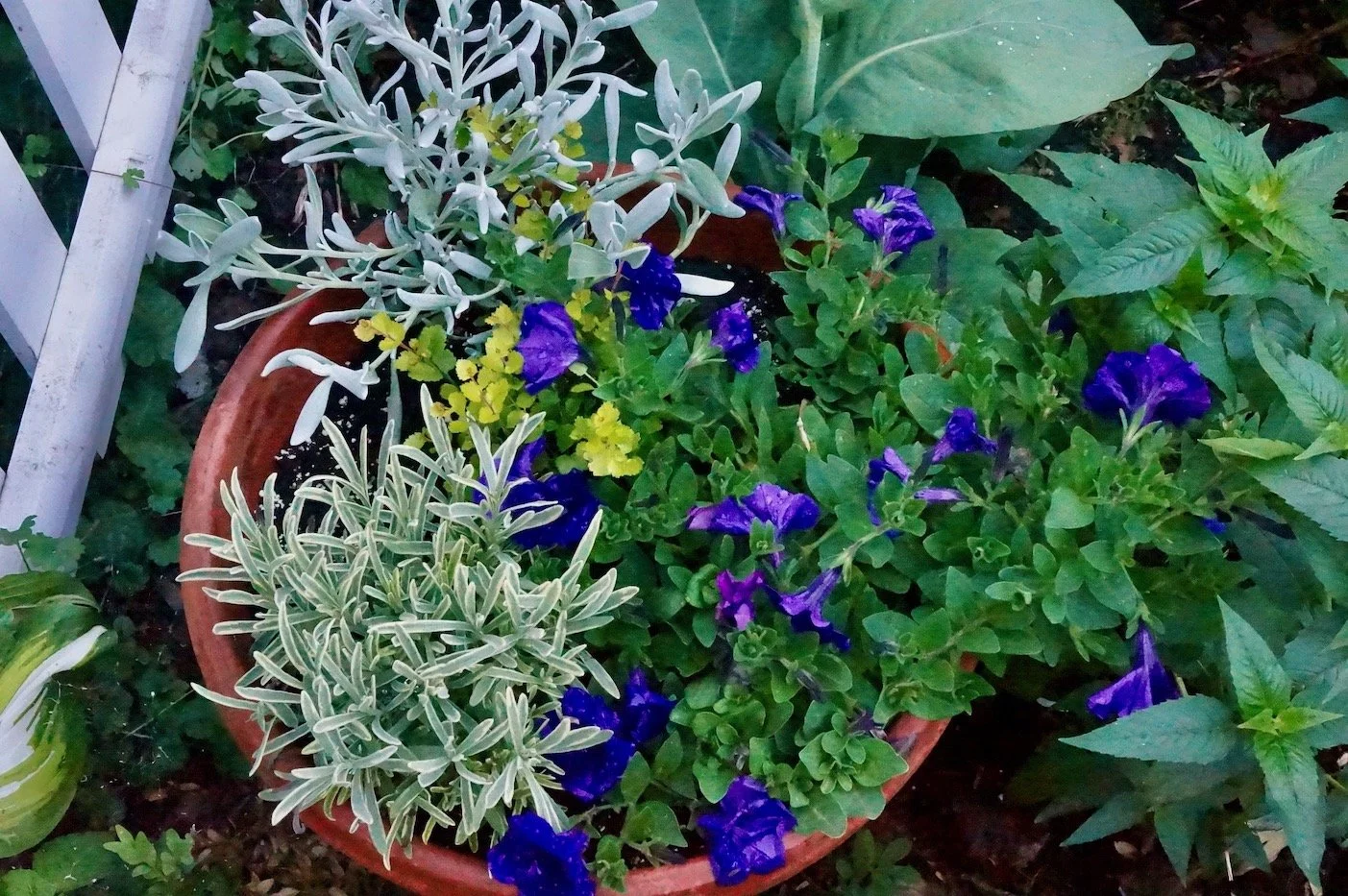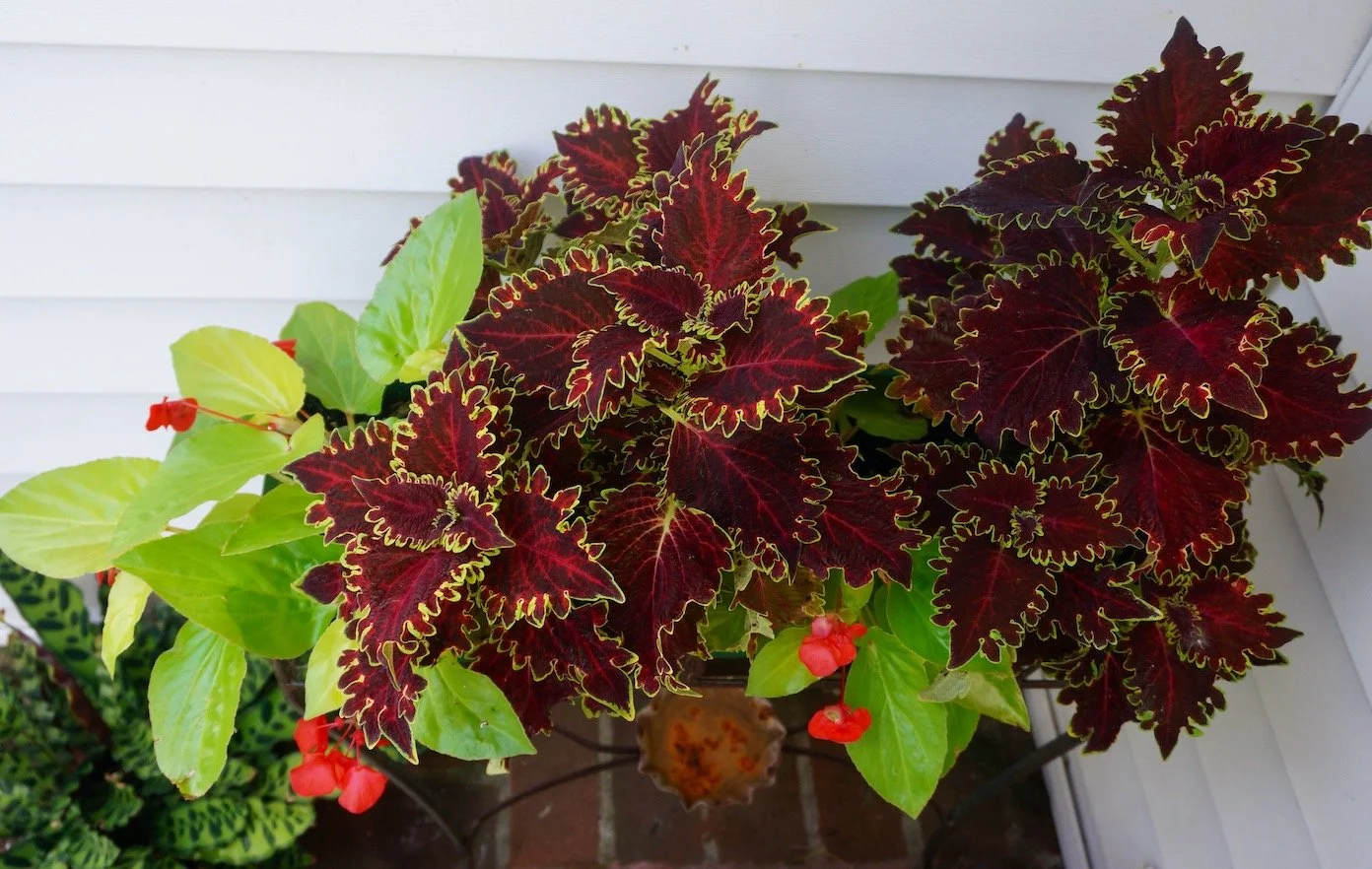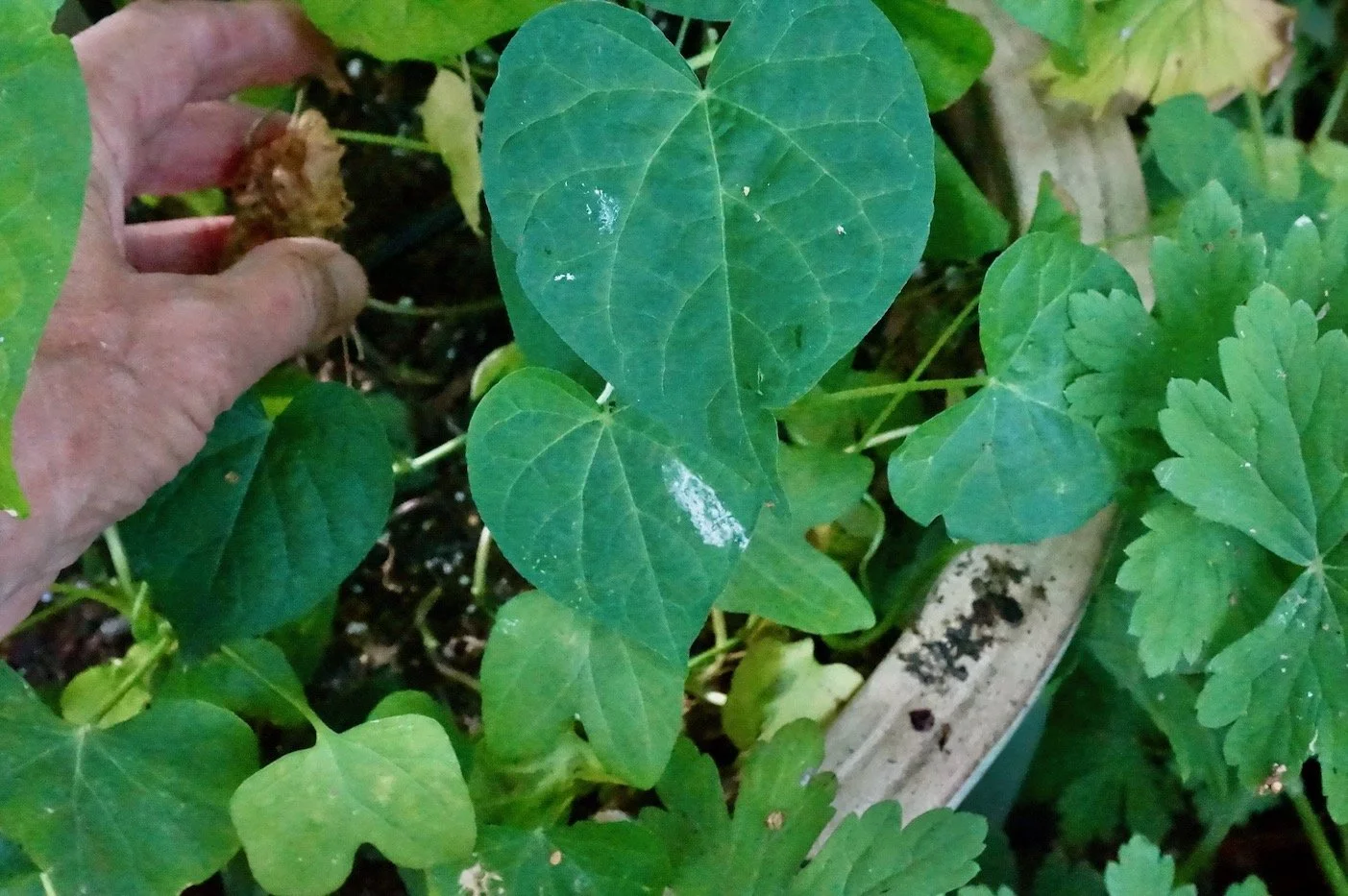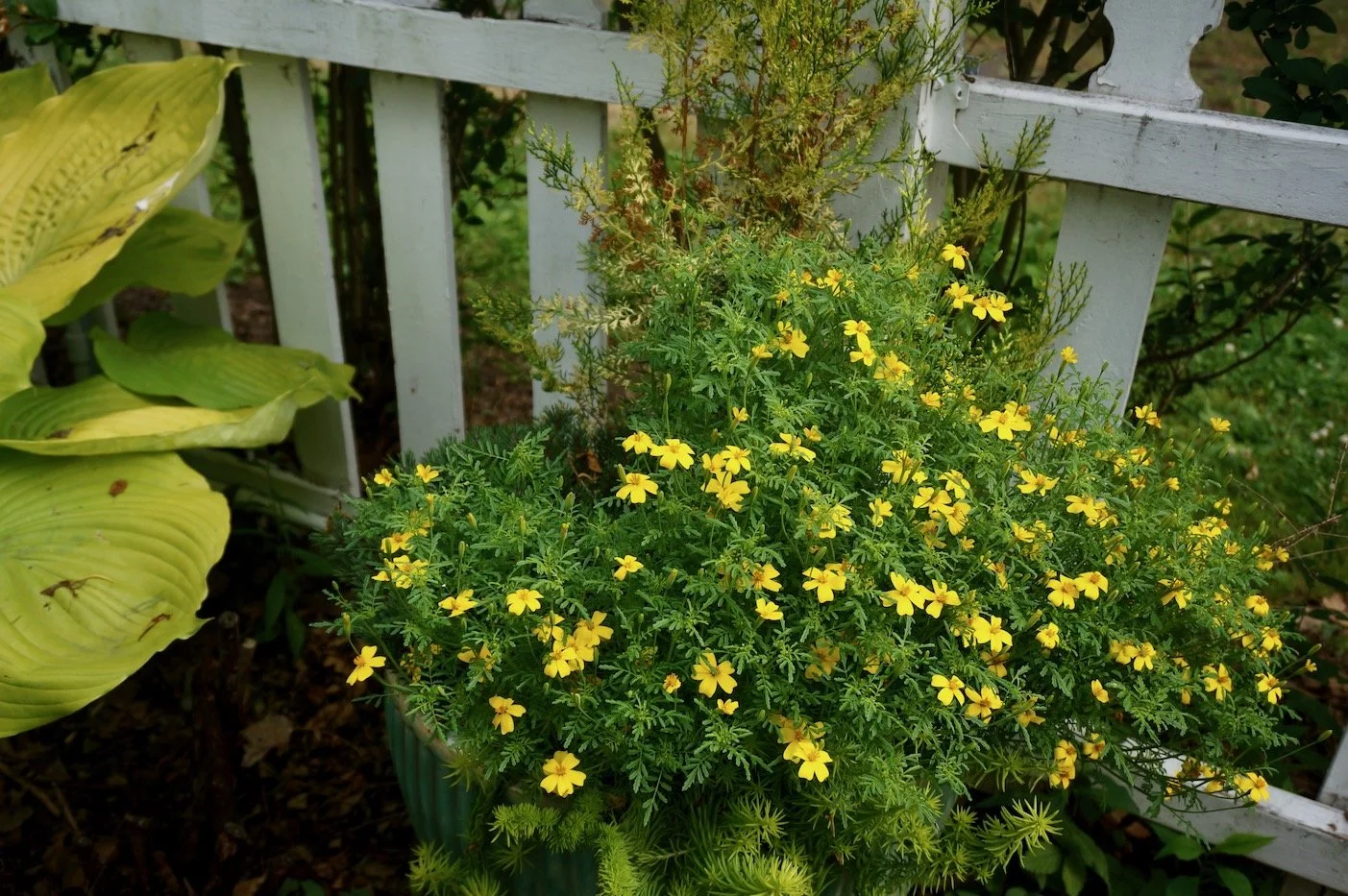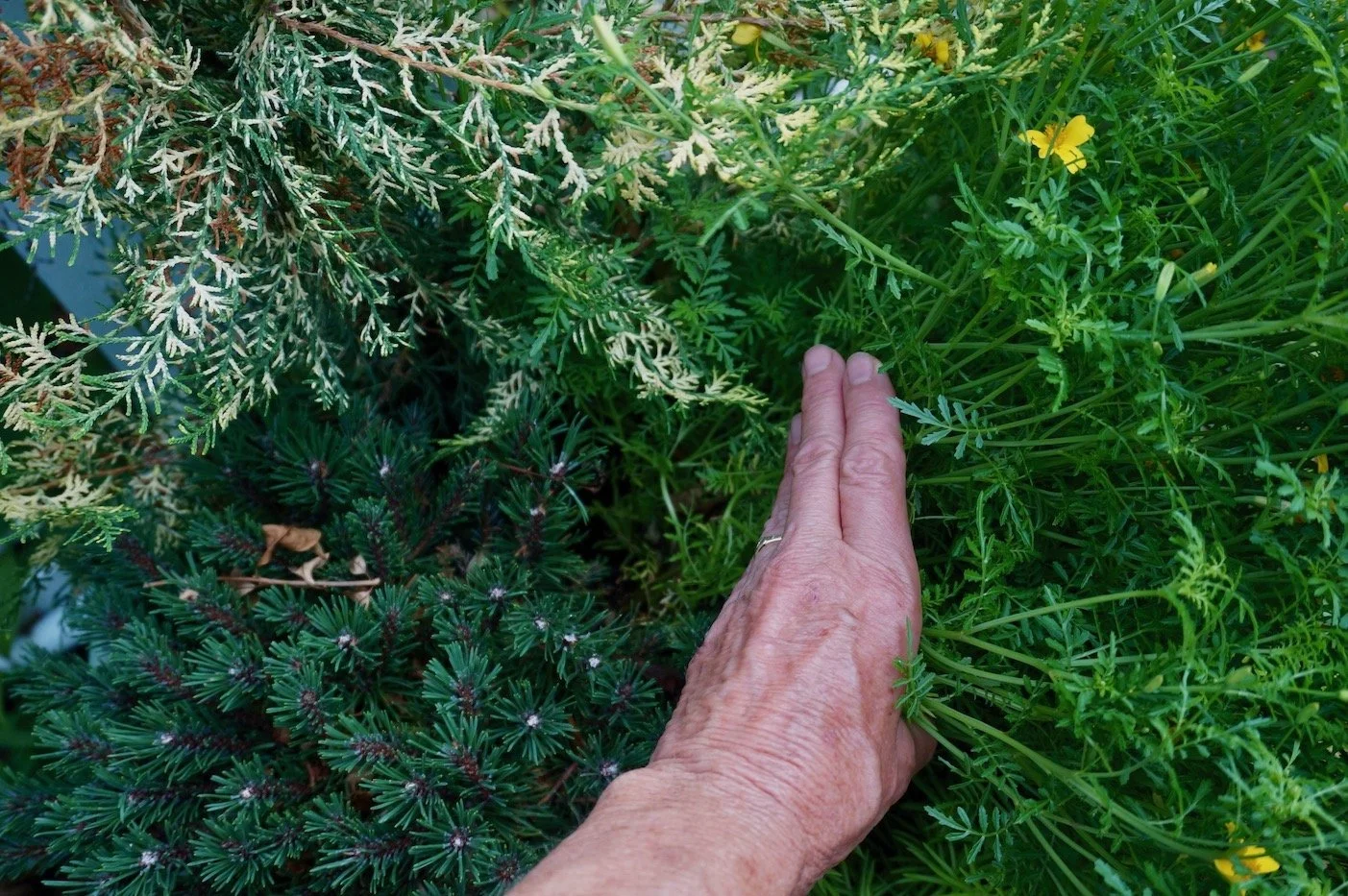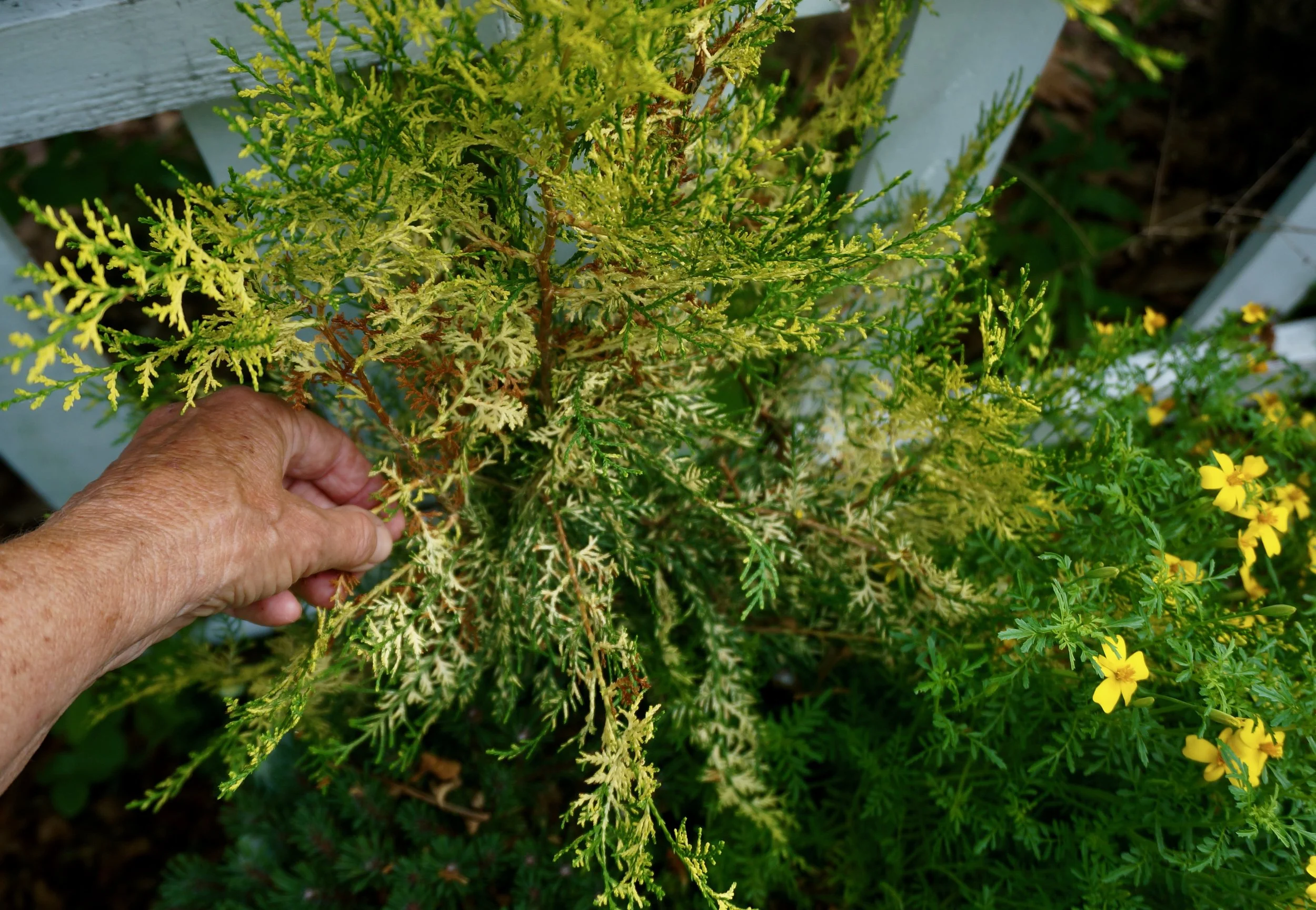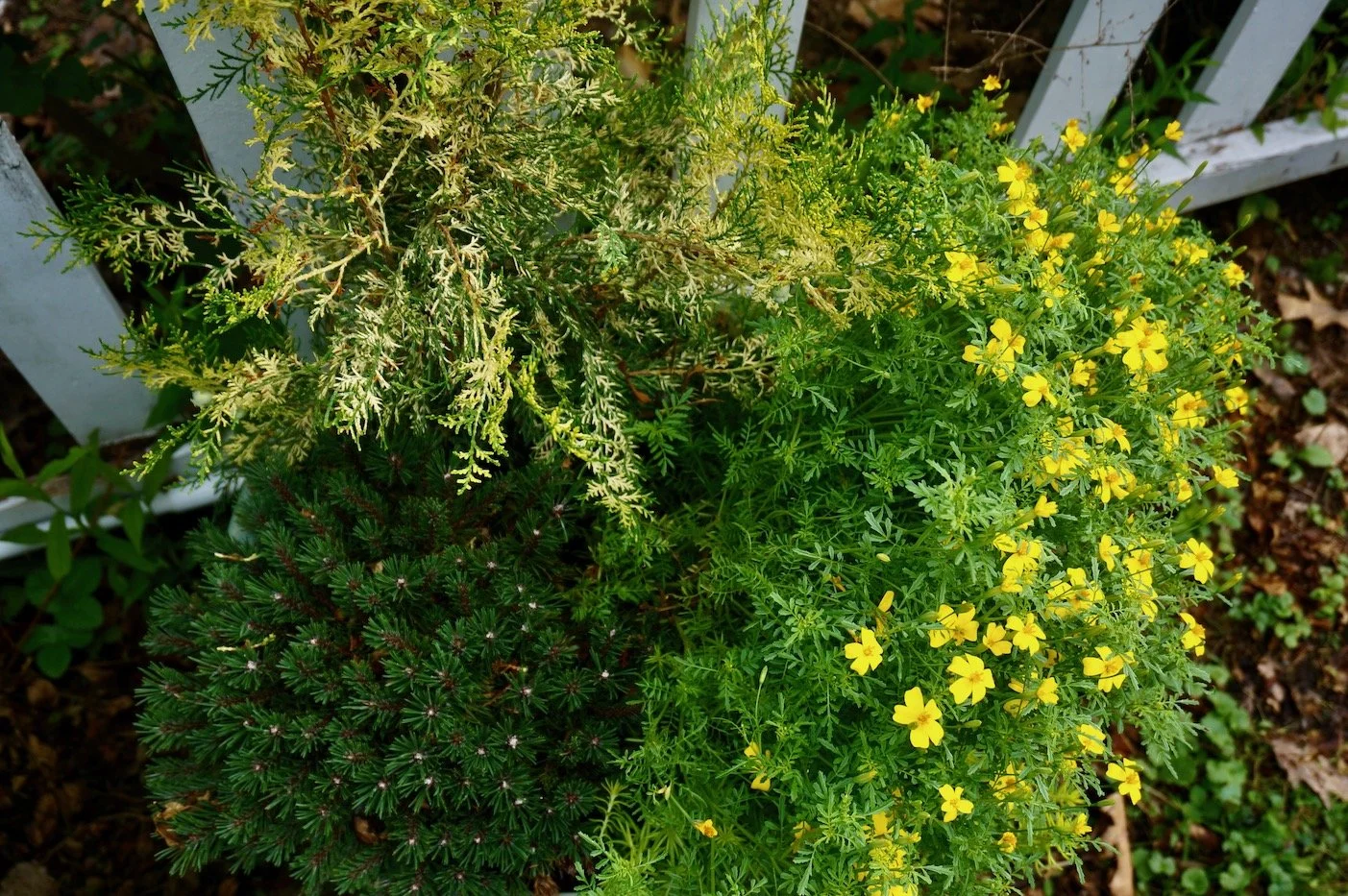It’s out of hand! 7 ways to keep containers in check
A few months ago, one of my readers asked if I’d write about the care and management of containers - “I’m not sure what to do once they start getting out of hand,” she told me. It happens pretty fast toward the end of July and August doesn’t it? The plants look so insignificant (below photo) when you first put them in, it’s hard to believe that in a mere month or so they’ll be crawling all over each other. If yours are beginning to look crowded or sloppy, now is the time to take action.
Once you get to the point seen in the below photo, keeping one plant from obliterating another requires management. Regular grooming keeps them from looking spent by the end of the summer.
That means pruning back plants, deadheading, deadleafing, occasionally removing straggly or dead specimens and feeding. I thought I’d share a few of my own rescue missions, in hopes that they might be useful to some of you.
1. Pruning back: One plant can take over the show quickly so you need to be bold. If you’re nervous about how much to cut back a plant, brush the foliage and/or flowers aside with your hand to get a feel for how much to remove before you start wielding your pruning tools. Keep in mind that anything that’s already rambunctious is going to grow back fast. Some annuals, such as petunias, marigolds and sweet potato vines are more forgiving than others. Annuals overtake space more quickly than perennials.
Ipomoea ‘Blackie’ (sweet potato vine) is a vigorous grower that needs to be kept from running amuck. Prune toward the center of the plant to remove side growth.
Your goal is to maintain fullness without one plant gobbling up all the others (below photo). All annuals in this container were pruned back just enough to keep the container in check.
2. Subtracting: In the container below you can see the result of some overly ambitious planting. I wish I hadn’t added those Wave petunias (Petunia ‘Wave Purple’) - a fine little annual, but it’s kind of a hog.
They smothered that poor little artemisia. There was no way to make it look any better so I pulled it out. Give yourself permission to get rid of things that look ratty! Sometimes you can cut a plant back and nurse it along, but in this case I didn’t really need it.
3. Deadhead: Removing spent heads extends the flowering period and keeps the container from looking tired and dowdy as summer progresses. These wave petunias don’t need much deadheading, but I pulled off a few of the spent blooms to freshen it up.
After my edits. I probably could cut those petunias back even more to give some definition.
Here’s another example of immediate gratification catching up with me. I should have known that those coleus would smother the begonias. I could take one out and plant it somewhere else.
Alas, not having another inch of available space anywhere, I settled on cutting the foliage back so I could actually see the begonias.
4.Pinching back: This refers to pinching the top stems off the plant. If the growth is soft, you can do it with your fingers. This will encourage side growth rather than allowing the plant to get tall and spindly - not what you want in a container.
5. Deadleafing: Damaged, or brown leaves are depressing, they made me want to rip this container (below photo) apart! If you have a similar problem, it’s worth it to take little time to pick or cut them off. Future foliage problems can be avoided by not letting the container dry out. And make sure it’s in a spot that suits the needs of the plants you’re growing.
Some of the leaf damage above is due from a stupid move on my part. I hit this container with the Miracle Gro feeder on my hose in the middle of the day. While foliar feeding is a great way to boost growth, you should never do it when the sun is out because it will burn the foliage.
Below is a container I composed in early spring with a couple of conifers I fell in love with but had no home for. There are two problems here: the needles on the Thuja are browning out (forgot to water) and the Signet marigold is suffocating the bottom of it and obliterating a lovely little mugho pine.
You can see it hiding under the marigolds in the below photo.
Slowmound Mugo Pine, a gift from Iseli Nursery. I can’t wait to find a permanent home for this guy!
Note how I brushed back the marigold before I cut it back.
I combed through the foliage with my fingers to get rid of the dead needles and made a promise to myself to water more often! If you’re dealing with needled foliage like this make sure it’s dry before you mess around with it as the needles will stick to your hands.
6. Feed and water regularly: If you want robust containers, regular watering is crucial. So is weekly feeding. I use Miracle Gro - for those of you who prefer not to use chemicals, choose the organic version. Maxsea is another organic fertilizer I like. To revive struggling plants or give them a quick boost I recommend foliar feeding (late in the day). For me, the biggest obstacle is remembering to do it on a regular basis. I think it’s worth it to invest in a Miracle Gro garden feeder (you can use any fertilizer in it) and keep it near or attached to the hose so it’s easy to do.
7. Choose your battles: As much as I love them, annuals require more care than perennials, grasses and shrubs. I like to mix them up so that I’ll always have decent foliage as well as flowers. Taking care of containers is time consuming, so try not to take on more than you can manage!

